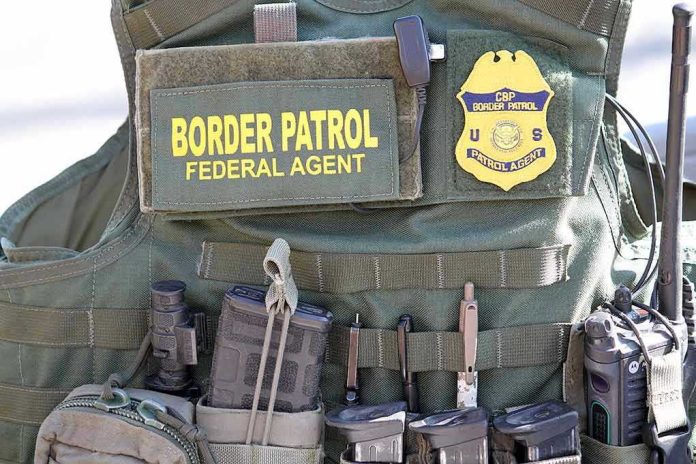
Mexican drug cartels are now offering up to $50,000 bounties for the murder of U.S. immigration officials, marking a dangerous escalation in the decades-long battle for control of the border.
Story Highlights
- Cartels have placed bounties as high as $50,000 on the lives of ICE agents, according to Department of Homeland Security (DHS) reports.
- These threats include not just bounties but also ambushes and the use of drone surveillance to track law enforcement movements.
- The situation reflects a new level of sophistication and aggression in cartel tactics, moving beyond traditional violence to targeted, incentivized attacks on U.S. officials.
- Border security and the safety of immigration officers are now at the forefront of national security concerns.
The Cartel Threat Evolves
Mexican cartels have long used violence to protect their billion-dollar drug and human trafficking operations, but the introduction of bounties for killing U.S. immigration officers signals a strategic shift. DHS confirms cartels are not only targeting ICE agents with ambushes but also employing drones to monitor U.S. law enforcement, providing real-time intelligence to would-be assassins. This tactic blurs the line between organized crime and asymmetric warfare, forcing American authorities to adapt to a threat that is both highly organized and technologically advanced.
The $50,000 bounty—a sum that dwarfs the annual income of many in the border region—demonstrates the cartels’ willingness to invest heavily in eliminating obstacles to their operations. For context, this is not the first time cartels have targeted law enforcement, but the scale, coordination, and use of technology represent a clear escalation. The cartels’ message is unambiguous: cross their interests, and the consequences will be severe, calculated, and highly personal.
Historical Roots and Escalating Tensions
The U.S.-Mexico border has been a flashpoint for decades, with cartels and U.S. authorities locked in a perpetual game of cat and mouse. As border security measures have tightened in recent years, cartels have responded with increasingly sophisticated methods to evade, corrupt, or eliminate enforcement. The current bounty scheme must be seen in the context of this ongoing arms race—one where cartels continuously innovate to protect their profits, while U.S. agencies strive to stay one step ahead.
Previous incidents of violence against U.S. law enforcement were often sporadic or retaliatory. The systematic use of bounties, however, suggests a more coldly strategic approach, treating the elimination of specific officers as a business expense. This shift raises alarming questions about the potential for copycat tactics by other criminal organizations and the vulnerability of frontline agents who are already operating in one of the most dangerous environments in U.S. law enforcement.
Drug cartels have "disseminated a structured bounty program to incentivize violence against federal personnel," according to a press release from DHS. https://t.co/25kiBvIy6E
— ABC 7 Chicago (@ABC7Chicago) October 15, 2025
Stakeholders Under Siege
ICE agents, already tasked with enforcing some of the nation’s most contentious laws, now face a direct threat to their lives simply for doing their jobs. The Department of Homeland Security, charged with their protection, must balance the need for aggressive enforcement with the safety of its personnel. For border communities, the situation breeds fear and distrust, as residents wonder whether the rule of law can hold against such brazen criminal enterprises.
Cartel leaders, motivated by profit and power, see U.S. immigration enforcement as an existential threat. Their decision to issue bounties reflects both desperation and confidence—a belief that they can intimidate the U.S. government into backing down. Meanwhile, U.S. officials must decide whether to escalate their own tactics, potentially militarizing the border further, or seek new strategies that address the root causes of cartel power, including demand for drugs in the United States and corruption on both sides of the border.
Implications for Security and Policy
In the short term, the bounty threat necessitates immediate enhancements to agent security, including more robust intelligence, counter-surveillance, and possibly changes to operational protocols. The psychological impact on officers and their families cannot be overstated—knowing there is a price on your head changes the calculus of daily duty.
Long-term, this development challenges the foundational premise of U.S. border security strategy. If cartels can effectively target and eliminate law enforcement with impunity, the very authority of the state is at risk. Economically, the costs of additional security measures will strain budgets, while socially, the erosion of trust in government’s ability to protect its own could have far-reaching consequences. Politically, the situation may force a reevaluation of U.S.-Mexico cooperation, as well as domestic policies on immigration and drug enforcement.
Expert Perspectives and the Path Forward
Security experts view the cartels’ bounty scheme as a dangerous precedent, indicative of their growing boldness and organizational sophistication. Academics point to the need for a comprehensive approach that goes beyond interdiction—addressing demand reduction, economic development in source countries, and judicial reforms to weaken cartel impunity.
From a conservative standpoint, the situation underscores the necessity of a strong, resolute response to protect American sovereignty and the rule of law. However, it also highlights the limits of enforcement alone. Without addressing the underlying factors that empower cartels—corruption, poverty, and drug demand—any victory will be temporary. The challenge for policymakers is to balance immediate security needs with sustainable, long-term solutions that restore order without sacrificing American values.
Sources:
Wanted: Narcotics Rewards Program–Mexican Targets













